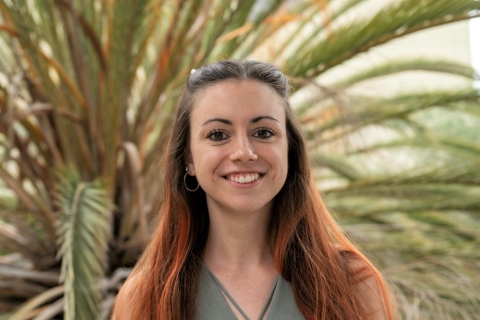
Date:
Location:
Speaker:
Title: Reversible and Size-Controlled Assembly of Reflectin Proteins Using Molecular Photoswitches
Abstract
As scientists seek to develop materials, therapeutics, and devices with life-like functions, it is advantageous to look to biology and leverage the complex behaviors that enable dynamic responses such as self-assembly, signaling, and adaptation. In particular, disordered proteins participate in dynamic, out-of-equilibrium processes in the cell including creating functionally graded materials, modulating biocatalytic rates, and controlling cell material properties such as refractive index. For example, the reflectin protein is one such cationic, disordered protein whose assembly and phase separation is responsible for the tunable color camouflage in cephalopod species. Stimuli-responsive control of reflectin’s assembly would enable the design of biophotonic materials with dynamic optical properties. However, replicating the behavior of disordered proteins like reflectin in synthetic systems requires a biorthogonal, external stimulus capable of rapid, precise, and reversible control. Among the various stimuli available, light stands out for its ability to provide remote, noninvasive, and spatiotemporally precise control over the behavior of both chemical and biological systems. In the Read de Alaniz lab, we utilize light and photoswitchable molecules to control system properties such as assembly, actuation, conductivity and pH. Photoswitches are light-responsive molecules that undergo reversible conformational changes upon light irradiation. While photoswitchable platforms have been developed to control the assembly and phase separation of polyelectrolytes, highly charged biomolecules, and globular proteins, they have yet to be applied to a system as complex as a disordered protein. This work aims to adapt and extend these existing photoswitchable strategies to enable reversible control of reflectin protein assembly. Such tools will be essential for integrating these systems into more complex environments that harness their unique properties.
This work focused on the development and application of photoswitchable strategies to control the assembly of the reflectin protein. In the first part of this dissertation, we demonstrate the co-assembly of reflectin with a tetrafunctional, anionic azobenzene photoswitch that formed electrostatic interactions with reflectin’s cationic amino acids. Photoisomerization between the trans– and cis–azobenzene isomers promoted or reduced Coulombic interactions, respectively, with the reflectin protein to cycle the sizes of reflectin-photoswitch complexes between 70 nm and 40 nm. In the second part of this work, we present the synthesis and application of a highly water-soluble diarylethene base that can cycle the pH of an aqueous solution in the neutral-to- basic regime. Many photoswitches capable of pH-modulation are limited by poor aqueous solubility, but this system is soluble above 50 mM, enabling repeated and sustained pH changes in buffered aqueous systems. These light-driven pH shifts were used to reversibly cycle the assembly of reflectin complexes. Together, these platforms establish a foundation for light- responsive control over the assembly of disordered proteins like reflectin and offer a strategy for the integration and control of these proteins in confined material environments where reversible and spatiotemporally precise regulation is essential.



